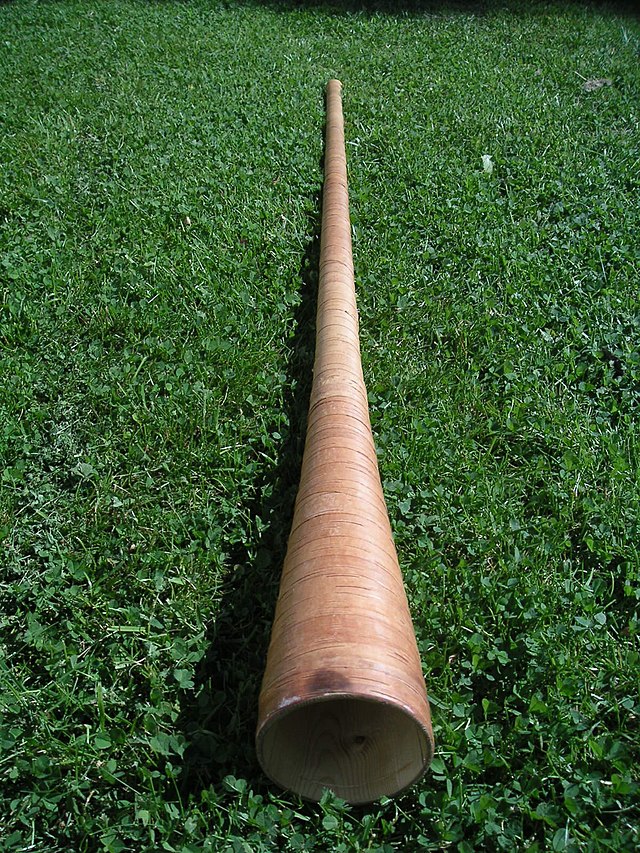This is a modern day Lur from Norway.
This is a Sami Drum (also known as a rune drum):
The Sami people live in areas of Norway, Sweden, Finland, and Russia. Their major means of livelihood is Reindeer Herding.
Campbell states that it is important for students to be able to recreate music. But they should also be able to create their own music as well. Campbell specifically states that "the creation of new music allows the dual aims of listening and the intellectual internalization of sonic structures to be achieved and demonstrated" (Campbell pg. 191). Campbell then goes on to say that the creation of "world music" is a great way to understand how people make music meaningful in their individual lives. Two stances exist when dealing with the performance of "world music:" those who believe in authenticity (where we must keep the music as authentic as possible) and those who believe in the "value [and] potential for new musical expressions that can emerge as an outgrowth of experience and training in a wide variety of music traditions" (Campbell pg 192). In order to create "world music" you can use a number of strategies. Students can extend what has already been created, meaning, they can add to a song that already exists. In the case of this piece, I could have my students create a dance to the already existing music or create their own drum part to play with the song. Another creating strategy one can take with "world music" is to completely compose or improvise their own piece of music. In order to do that I can show my students a variety of Sami music and ask them to compose or improvise on the Orff instruments a piece of music that sounds like it could belong to the group of music to which they have studied and listened.
References:
Campbell, P. S. (2004). Teaching music globally: experiencing music, expressing culture. New York: Oxford University Press.
Sami music. (2014, May 7). Wikipedia. Retrieved July 24, 2014, from http://en.wikipedia.org/wiki/Sami_music
Sami people. (2014, July 22). Wikipedia. Retrieved July 24, 2014, from http://en.wikipedia.org/wiki/Sami_people


Mary, this piece is absolutely beautiful. I love Scandinavian music and this is a wonderful representation of the ethereal quality the beauty of the music possesses. You brought up some very good points about extending the piece as a strategy for creating music mentioned by Campbell. I think it would be interesting to see a group of students extend this piece with the chords being played by the instruments and the singers improvising new melodies complementary to the original verses they heard. I also love the idea of them dancing and moving to this piece. I think this piece lends itself beautifully to that type of activity. Thank you for your selection this week! I will add Sami music to my world listening bucket.
ReplyDeleteHi Mary - I really enjoyed reading your post. You brought up so many important points about the Wade and Campbell readings we considered this week. I really like the ideas you pose for activities with your students. The piece you shared is really interesting and involves the authenticity of the Scandinavian culture with the influence of Western harmonies and pop production. The kids would love it, I'm sure. Great selection - thanks for sharing!
ReplyDelete-Martha
The piece reminds me of Enya even though they have different origins. Good reflection on Campbell’s strategies. Thanks for the citations, but I encourage you to use sources other than Wikipedia.
ReplyDeleteI don't usually utilize wikipedia as a source but I used it for the pictures this time around since they had the best pictures of the instruments that I could find!
DeleteIt reminds me of Enya as well now that I think about it!